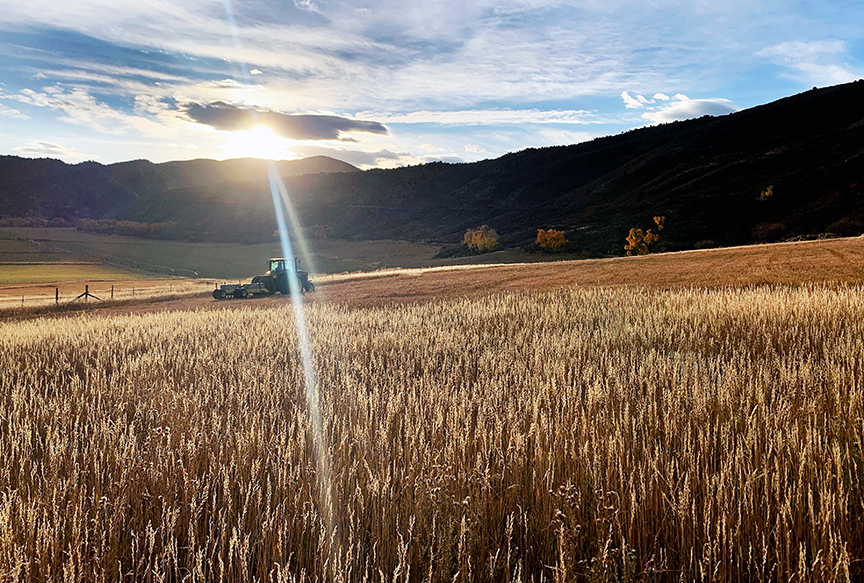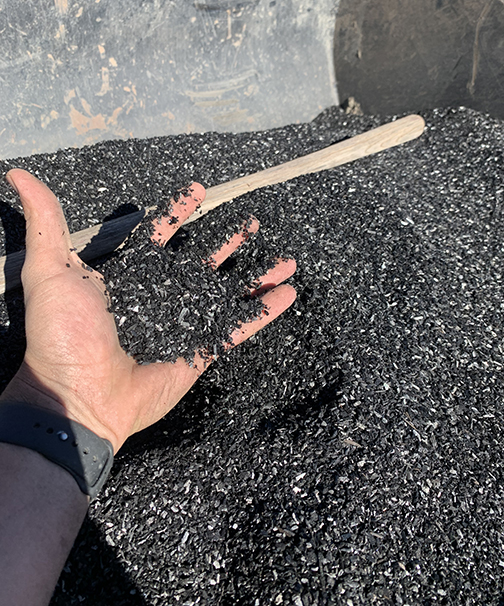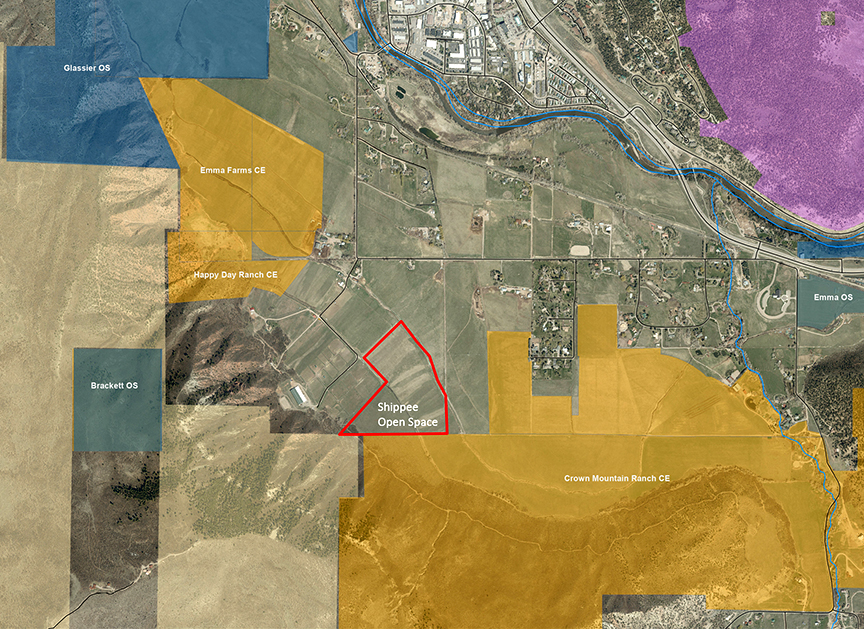Open space provides testing ground for soil health

Mechanical aeration at Shippee Open Space gets underway.
On a ski boot-shaped patch of land tucked up against the flanks of the Crown at Emma – where tawny, hip-high grass waves in the breeze and elk sometimes bed down in the afternoon sun – there’s more going on than meets the eye.
This 36-acre, landlocked property, dubbed Shippee Open Space, has been tabbed for a study of soil health in the face of persistent drought. Using Shippee, Pitkin County Open Space and Trails has joined a handful of local ranchers in testing methods to better manage fields of grass hay and alfalfa in a world of shrinking water availability.
In all, the Roaring Fork Conservancy and Carbondale-based Lotic Hydrological are managing research on four properties where land has been divvied up into test plots that will receive full water and partial water, as well as other soil treatments. The goal is figuring out what strategy produces the greatest crop yield and quality when the key ingredient to growing anything – water – is in potentially short supply. The work is being partially funded with grants from the Colorado Water Conservation Board and the Colorado Ag Water Alliance.
Summer 2023 served as the baseline for Shippee (purchased in 2019 and so named for an early Emma rancher). The pasture received its allocated allotment of water via piped irrigation from the Shippee Ditch. Soil and vegetation sampling, conducted by the Conservancy and Lotic Hydrological, set the benchmarks from which future success or failure can be measured.
In late October, two rectangular swaths of the property were mowed to accommodate nine, half-acre test plots. Three control plots received no special treatment. Three other plots were mechanically aerated – essentially gouged full of holes so that air, water and nutrients can penetrate more deeply into the soil. Finally, three plots received aeration plus an application of biochar, a charcoal-like substance created by burning organic matter. It is used to retain moisture and enhance soil fertility.
In 2024, the control, aerated and biochar plots will each be subjected to three different watering regimes – no irrigation at all, water only during the early season to mimic a water shortage as summer progresses, and all-season watering.
Another round of soil tests will occur in each of the plots and yields from each plot will be measured for comparison.
If the treatments make no real difference, Open Space and Trails Agriculture Specialist Drew Walters said he will still consider the experiment a success.
“While we’re certainly hoping to see benefits that could provide producers with a useful drought-management tool, results of no significant difference are also good to understand. If aeration doesn’t seem to help, and the biochar application doesn’t improve the soil health or improve the hay production, that’s a telling result,” Walters reasoned. “It’s important information for producers as they make their own decisions about spending money on soil enhancements and efforts to combat drought.”
At Shippee, where the land has been previously leased for hay production, but is also managed as habitat for the elk and deer that descend from the Crown to feed on the sloping grassland, the results of the experiment may help guide future habitat improvements, as well, Walters said.
– By Pitkin County Open Space and Trails

Biochar, ready for application.

Shippee Open Space, outlined in red, is located south of Emma Road in Emma, tucked up against the base of the Crown. Gold areas are protected by OST conservation easements, blue parcels are Pitkin County open spaces and tan designates BLM land.
